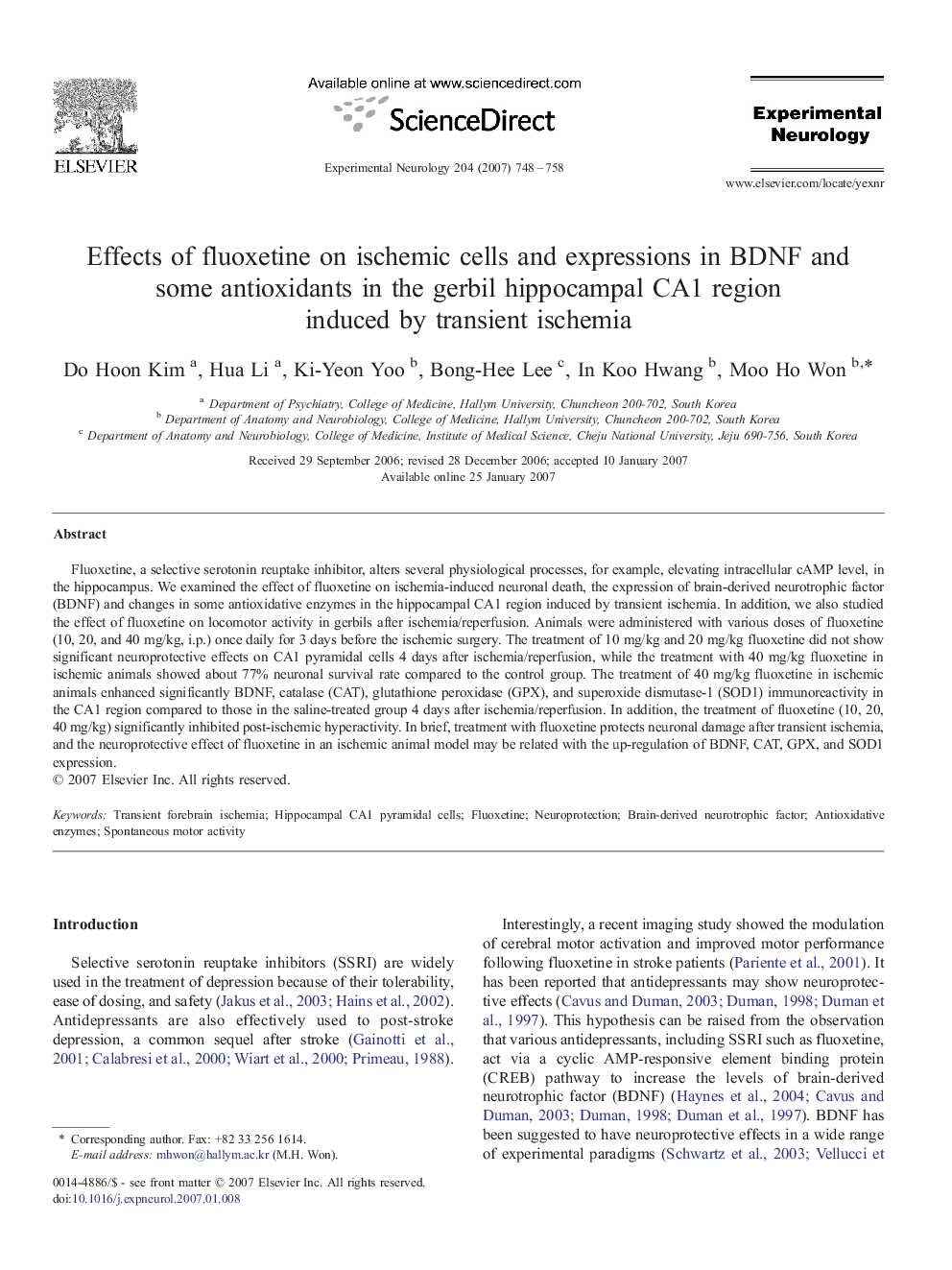| Article ID | Journal | Published Year | Pages | File Type |
|---|---|---|---|---|
| 3057233 | Experimental Neurology | 2007 | 11 Pages |
Fluoxetine, a selective serotonin reuptake inhibitor, alters several physiological processes, for example, elevating intracellular cAMP level, in the hippocampus. We examined the effect of fluoxetine on ischemia-induced neuronal death, the expression of brain-derived neurotrophic factor (BDNF) and changes in some antioxidative enzymes in the hippocampal CA1 region induced by transient ischemia. In addition, we also studied the effect of fluoxetine on locomotor activity in gerbils after ischemia/reperfusion. Animals were administered with various doses of fluoxetine (10, 20, and 40 mg/kg, i.p.) once daily for 3 days before the ischemic surgery. The treatment of 10 mg/kg and 20 mg/kg fluoxetine did not show significant neuroprotective effects on CA1 pyramidal cells 4 days after ischemia/reperfusion, while the treatment with 40 mg/kg fluoxetine in ischemic animals showed about 77% neuronal survival rate compared to the control group. The treatment of 40 mg/kg fluoxetine in ischemic animals enhanced significantly BDNF, catalase (CAT), glutathione peroxidase (GPX), and superoxide dismutase-1 (SOD1) immunoreactivity in the CA1 region compared to those in the saline-treated group 4 days after ischemia/reperfusion. In addition, the treatment of fluoxetine (10, 20, 40 mg/kg) significantly inhibited post-ischemic hyperactivity. In brief, treatment with fluoxetine protects neuronal damage after transient ischemia, and the neuroprotective effect of fluoxetine in an ischemic animal model may be related with the up-regulation of BDNF, CAT, GPX, and SOD1 expression.
